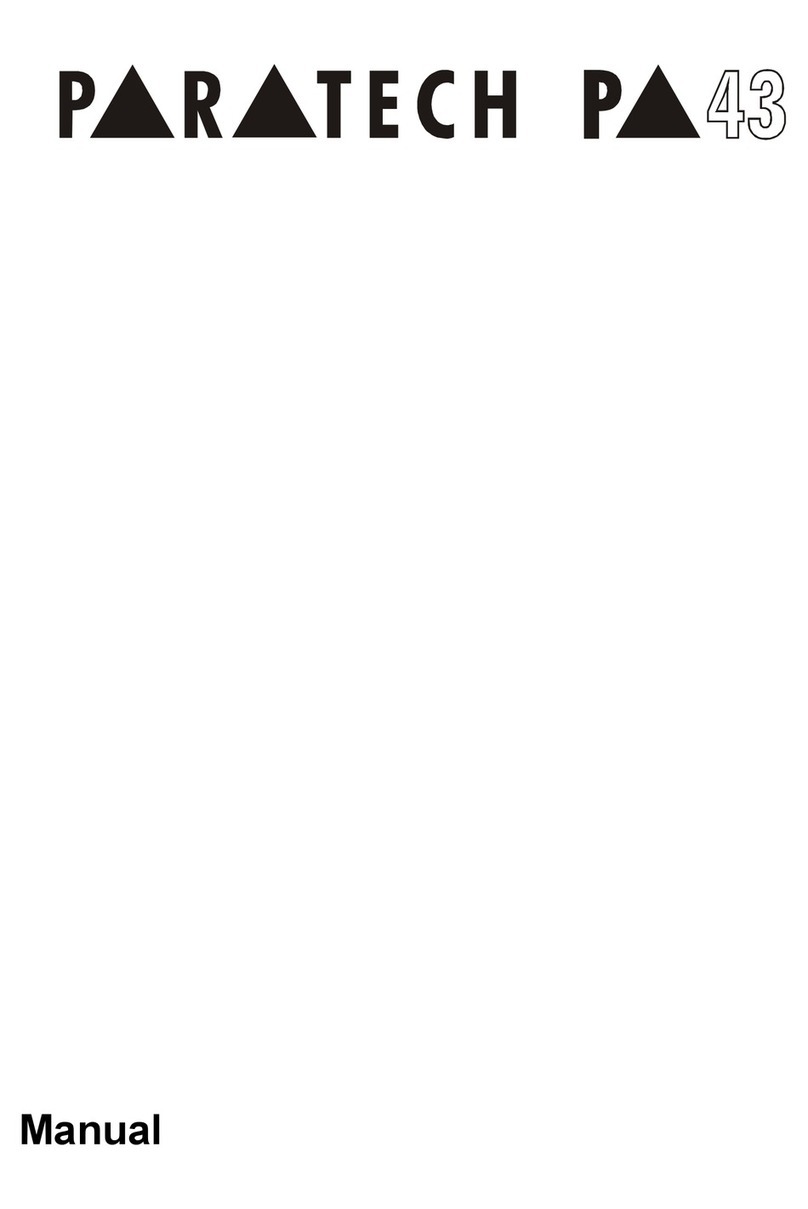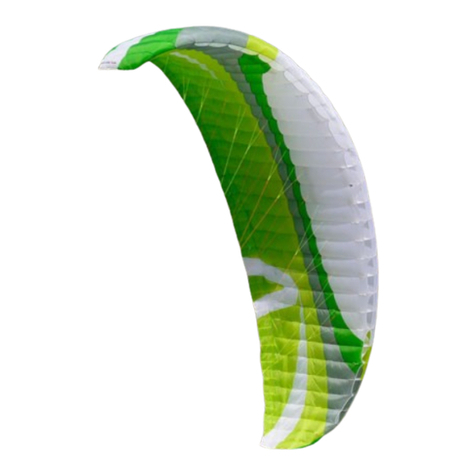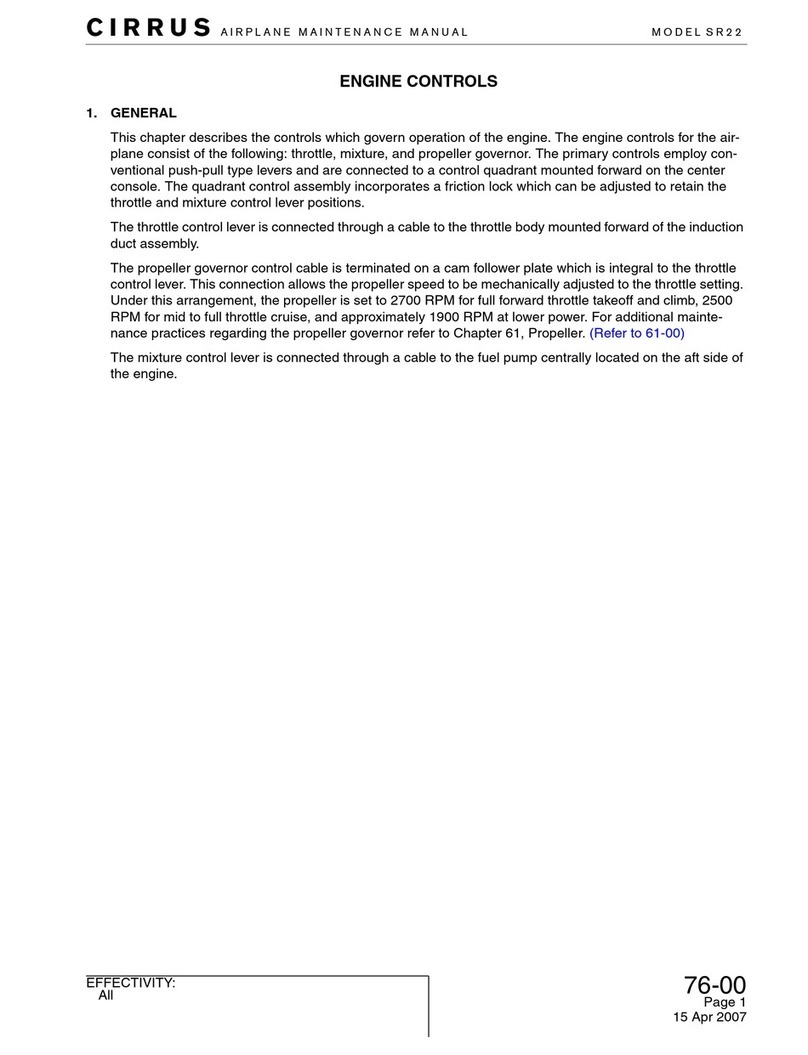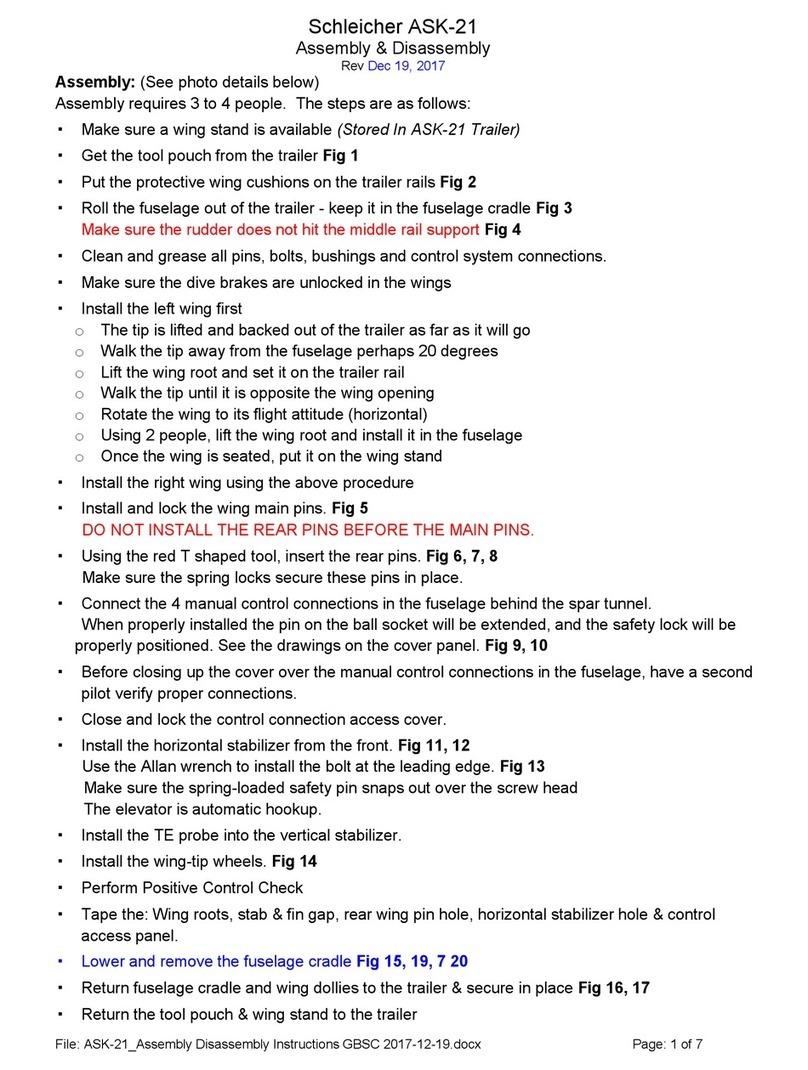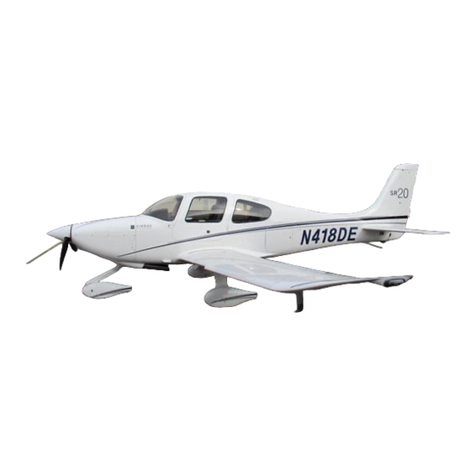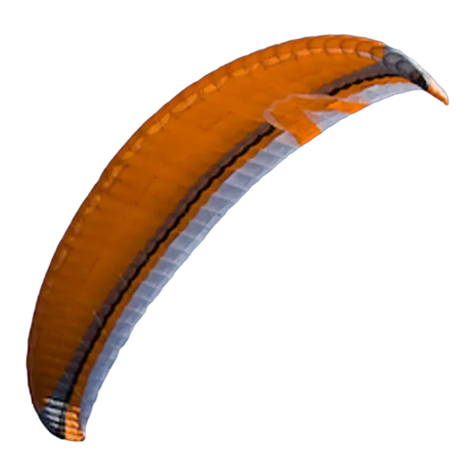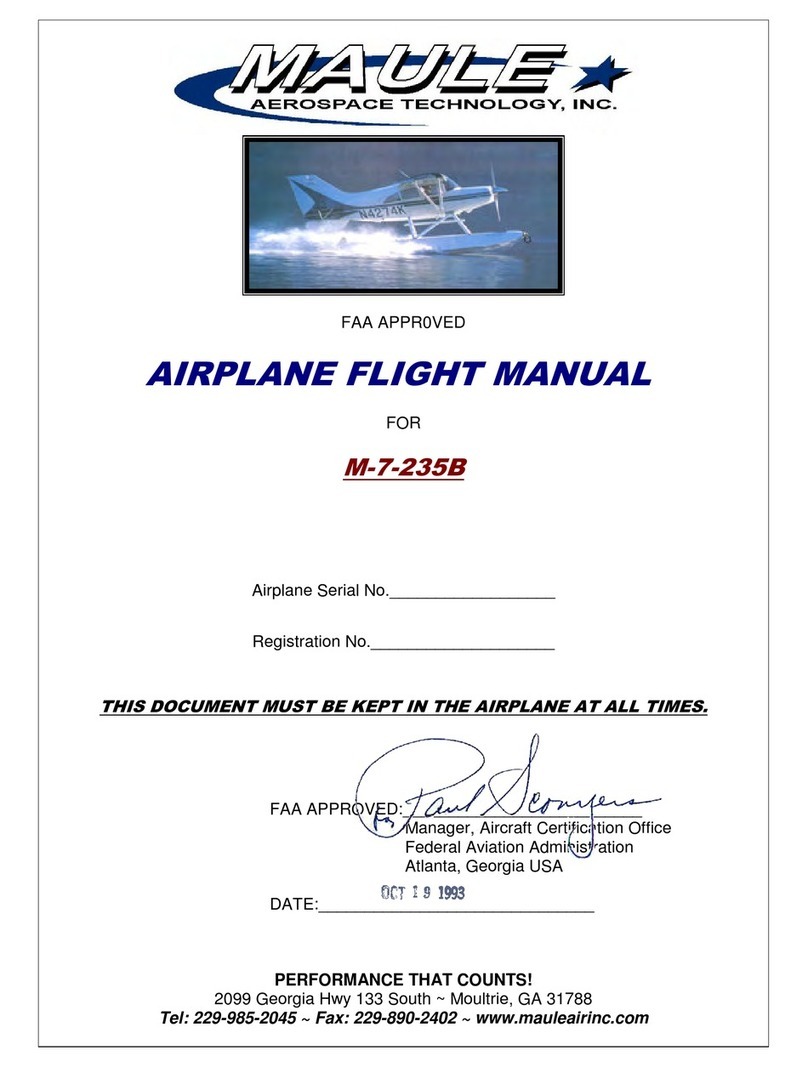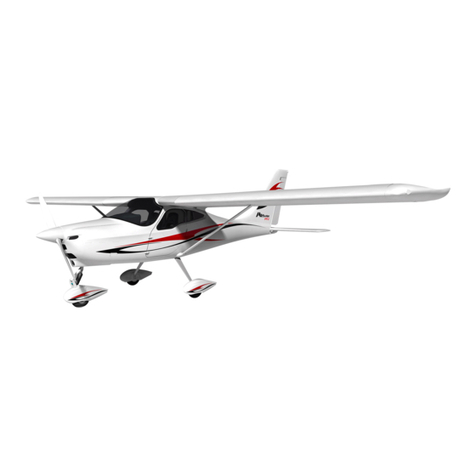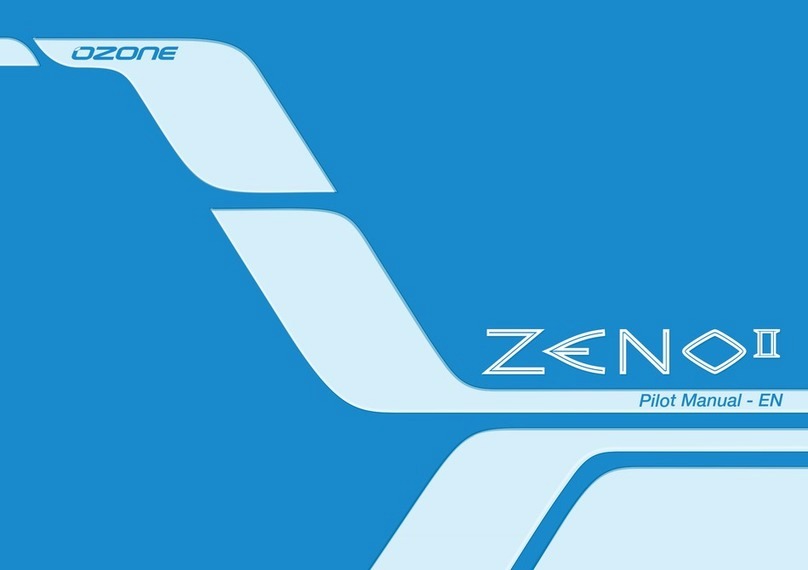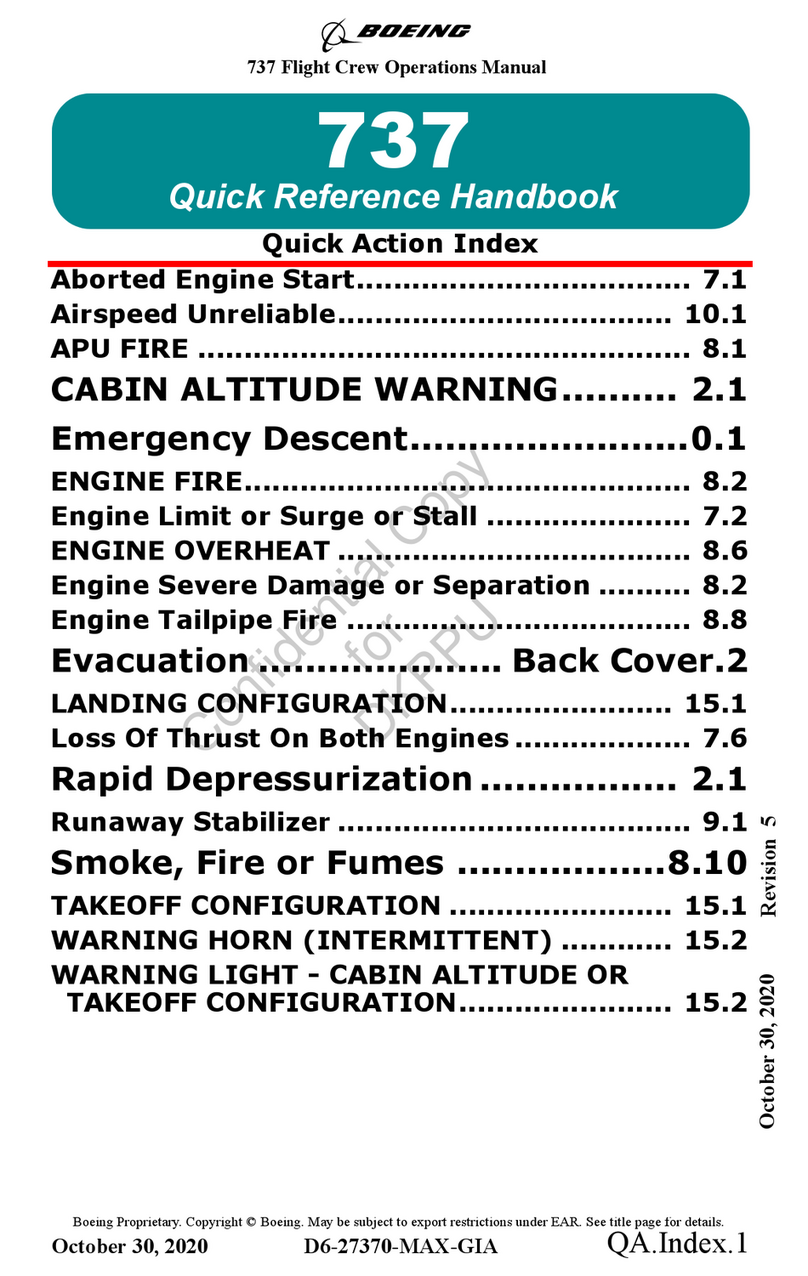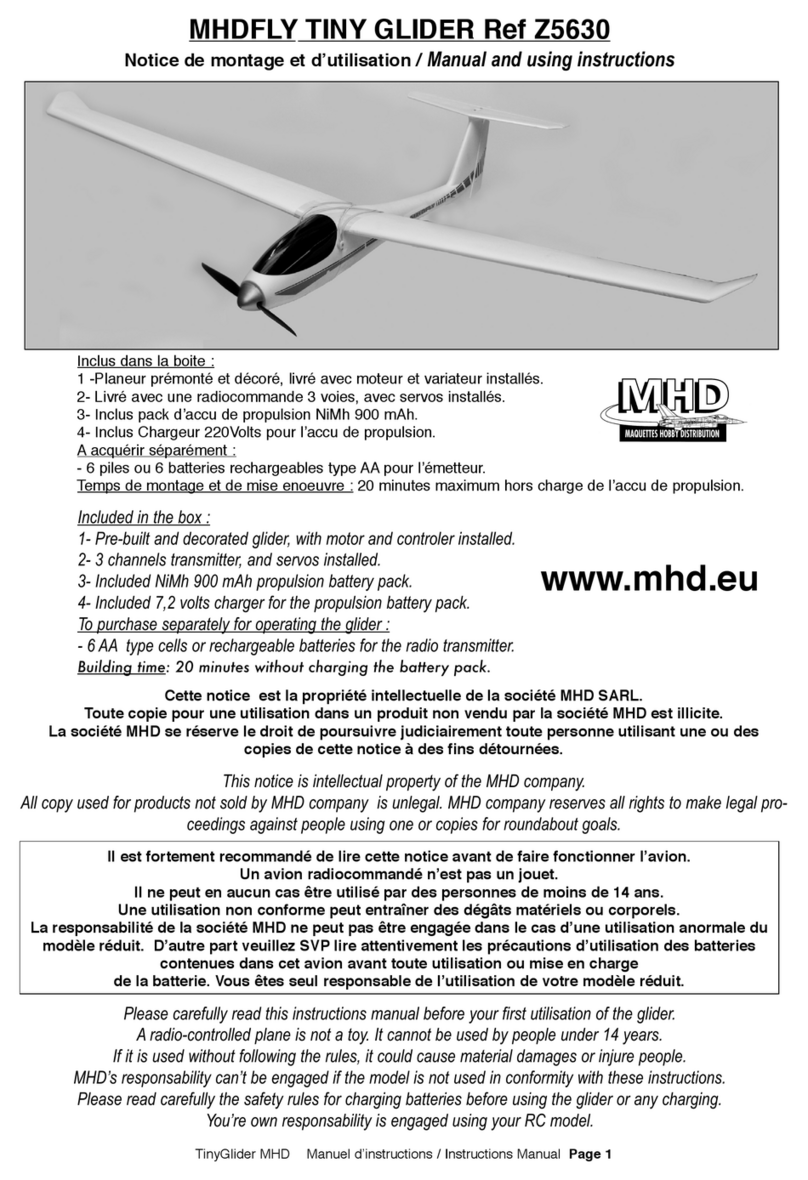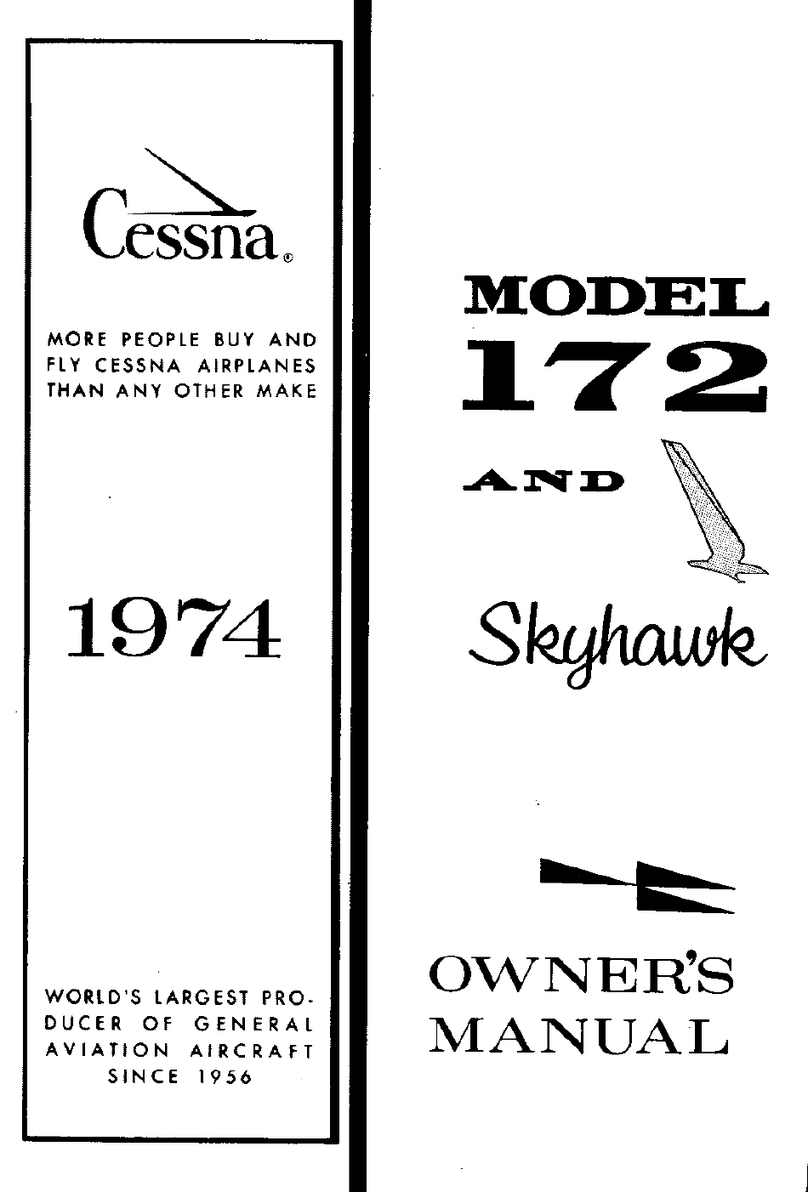paratech P80 User manual

- 1 -
P80 Manual

- 2 -
Table of Content:
1
Performance Characteristics of the PARATECH P80........ 5
2
PARATECH Technolo y................................................ 7
2.1 Computer Aided Desi n................................................................................... 7
2.2 Wing Shape......................................................................................................... 7
2.3 Wing Profile........................................................................................................ 7
2.4 Leading Edge Cell Opening with PAF (Permanent Air Flow) ........................... 7
2.5 Wing Reinforcement........................................................................................... 7
2.6 Diagonal Bands................................................................................................... 8
2.7 Risers................................................................................................................... 8
2.8 Main and Cascade Lines Layout......................................................................... 8
2.9 Break Lines ......................................................................................................... 8
2.10 Riser Selection .................................................................................................... 8
2.11 Materials ............................................................................................................. 9
2.12 Colours................................................................................................................ 9
2.13 Design ................................................................................................................. 9
2.14 Summary ............................................................................................................. 9
3
Suitable Harnesses .....................................................10
3.1 General.............................................................................................................. 10
3.2 Adjustment of a Harness with Variable Cross Bracin .............................. 10
3.3 PARATECH M-Series....................................................................................... 10
3.3.1 Base Configuration ................................................................................... 10
3.4 PARATECH A Series........................................................................................ 11
3.4.1 Base Configuration ................................................................................... 11
3.5 Supplementary Modules ................................................................................ 12
4
Fli ht Operations........................................................13
4.1 P80 Risers with Speed System ..................................................................... 13
4.1.1 P80 Speed System..................................................................................... 13
4.1.2 Accelerated Flying .................................................................................... 14
4.2 Pre-flight Check and Flight Preparation ........................................................... 15
4.3 Take Off ........................................................................................................... 16
4.4 Turns and Spiral Dive ....................................................................................... 16
4.5 Thermaling and Soaring in Turbulent Condition: “Active Flying” .................. 17
4.6 Landin ............................................................................................................. 18
4.7 Towin .............................................................................................................. 18
5
Rapid Descents at reater than 5 m/s Sink Speed ........19
5.1 “B Line” Stall.................................................................................................... 19
5.2 Spiral Dives....................................................................................................... 20
5.3 “Big Ears” and “Big Ears” with Speed System ................................................ 20
6
Extreme Flyin Manoeuvres ........................................21
6.1 Deep Stall (Parachutal Stall)............................................................................. 21
6.2 Asymmetric Deflation (Asymmetric Wing Tucks)........................................... 21

- 3 -
6.3 Frontal Collapse of the Canopy .................................................................... 21
6.4 Cravats or Line Over......................................................................................... 22
6.5 Spins (Flat or Negative Spins) .......................................................................... 22
6.6 Full Stall............................................................................................................ 23
6.7 Emer ency Steerin ....................................................................................... 23
7
Maintenance, Packin , Repairs and Retestin ...............24
8
Final Remarks ............................................................25
9
Technical Documentation............................................26
9.1 Technical Data ................................................................................................ 26

- 4 -
P80 Manual
(Issue Date 24 May 2004)
To make you familiar and comfortable with your new para lider we recommend
that you carefully read this manual. This will allow you to et to know your new
lider quickly and comprehensively. In addition to all the information with
re ards to fli ht operations the manual provides important uidelines and advice
for the safe operation and maintenance of your lider. We request that this
manual be passed over to any future owner of this lider.
Any unauthorised alterations made to this para lider will invalidate its air
worthiness certification. The operation of this lider is entirely the risk of
its user. Any liability of the manufacturer or endorsed a ent of the
manufacturer is excluded. The DHV type identification ta forms part of
the documentation of this manual.
Each pilot carries the responsibility for his personal safety and is responsible that
the apparatus, which he/she operates and flies with, is checked for safety and
airworthiness prior to each take-off and fli ht and properly maintained. The P80
may only be operated with a valid pilot license authorised by the relevant
authority and under the supervision and endorsement by an authorised
instructor.
The PARATECH P80 may not be operated:
•
Outside the minimum and maximum take-off limit
•
At a pitch reater than 90
0
about the pitch and roll axis of the lider
•
Aerobatics
•
With en ine, except with special endorsement by DULV
•
In rain, in snow falls, in clouds or fo
•
In moist and wet conditions
•
In turbulent weather
•
Aerobatics is dan erous and for this reason not permitted
•
By pilots with insufficient experience and qualifications

- 5 -
Welcome to PARATECH
We con ratulate you to the purchase of your new para lider and wish you many
happy hours in flyin with the PARATECH P80.
Please complete the Warranty Card below and forward the document to:
PARATECH AG, Beim Alpenblick, CH-9057 Weissbad
This will ensure your full warranty entitlement. This also allows us at PARATECH
to forward to you without delay any information on new developments and if
necessary current technical “NOTAMs” re ardin your PARATECH P80.
Para lider development at PARATECH is desi ned to achieve our pilots demands
for optimal quality and performance. For this reason we encoura e you to
forward any su estions or critics to assist us in the development of our liders.
Should you as owner and pilot of a P80 have any need for assistance, which
cannot be answered by our distributors, we would be pleased to assist you. We
are always here to provide you with the knowled e you request.
Please complete the form below and forward information to us for our records.
PARATECH will reward your efforts with a surprise.
1Performance Characteristics of the PARATECH P80
We recommend the P80 for experienced pilots, who value fun and satisfaction as
part of their para lidin experience. Also re ular pilots, lookin for an easy to fly
para lider, will enjoy satisfaction with the P80. With re ards to lide and sink
performance, as well as speed band, the P80 will match its performance with
many other liders. The handlin of the P80 is direct, balanced with plenty of
safety mar in to spare.
Despite the P80’s ease of handlin , the pilots must of course abide by the rules
of “Active Flyin ”, otherwise the flyin of the P80, as is the case with all other
liders, becomes dan erous.
As with all PARATECH liders, the P80 has been developed with a hi h safety
demand in mind. With the P80 the desi n team has mana ed a further
breakthrou h in fli ht stability combined with fli ht performance, fli ht
enjoyment and for iveness with re ards to handlin .

- 6 -
Years of experience and intensive development work with on oin refinement
and rework of the win have evolved in a lider, which can be rated at the
forefront of currently available win technolo y.

- 7 -
2PARATECH Technolo y
2.1 Computer Aided Desi n
A number of Computer-Aided-Desi n packa es have been used to develop the
P80’s win shape and profile. The shape of each and every P80 is reproduced
durin the manufacturin process with the hi hest precision employin CNC
driven cuttin tools.
2.2 Wing Shape
The P80 presents an ele ant, aesthetically shaped win form of hi h
aerodynamic quality combined with passive safety.
2.3 Wing Profile
The P80’s profile has been researched and refined by PARATECH throu h
intensive and demandin numerical modellin and practical trial work. A variable
profile alon the entire span of the win provides for optimal lift distribution. This
is only one of many reasons for the P80’s balanced combination of performance
and stability.
2.4 Leading Edge Cell Opening with PAF (Permanent Air Flow)
We call our newly developed Zi za leadin ed e openin “Permanent Air Flow”
(PAF). It is a continuation of our research in partially closed win cells. The
system allows the efficient, steady and quick fillin of the cells at all “An les of
Attack” (AOA) despite the extremely small openin size. These are just some of
the reasons for the P80’s ood natured inflation characteristics durin take-off
and the hi h trim speed achievable durin fli ht.
2.5 Wing Reinforcement
Careful desi n of the P80’s win reinforcement provides on the one hand
stren th in critical areas, but also plays an important role in maintainin the cell
inflation at the start and quick reinflation durin turbulence induced win tucks.

- 8 -
2.6 Diagonal Bands
The P80 incorporates dia onal bands for cross bracin . This adaptation of ultra
li ht wei ht construction techniques makes it possible to utilise a reduced
number of line attachment points without limitin the number of win cells. This
achieves hi hest aerodynamic characteristics at minimal canopy wei ht. The
dia onal bands provide a considerable contribution to performance potential and
the aesthetics of the P80.
2.7 Risers
The PARATECH P80 features 4 point risers which are also fitted with a speed
system. The deployment of “Bi Ears” is made easy by the inclusion of split “A-
Risers’’. Extremely easy take-off handlin , “B-Riser” stallin , steerin capability
with the “D-Risers” and optimised eometry for accelerated fli ht, apart from the
wei ht specific stren th, were the most important aspects of the riser
development.
2.8 Main and Cascade Lines Layout
The cleverly desi ned layout of the main (principal) and cascade lines not only
provides the P80 with the easy take-off handlin but also with its exceptional
fli ht characteristics. This line layout also achieves a stark reduction in unwanted
parasitic dra .
2.9 Break Lines
The trailin ed e breaks are controlled with the break lines. The layout of the
break lines is such that the P80’s handlin , even at moderate break pressure,
occurs without any stallin tendencies. The lines are arran ed in a manner which
absorbs overreactions by pilots with ease.
2.10Riser Selection
All risers used by PARATECH are pre-stretched, cut to exactin len ths and
finally sawn. A precisely documented quality record of all riser len ths for each
and every P80 manufactured is all but second nature to PARATECH.

- 9 -
2.11Materials
For the upper canopy surface and the cell walls a specially coated water repellent
nylon material of hi hest quality is used. Apart from its excellent durability, it
features a hi h colour fastness. It excels in resistin dia onal stretchin and in
its ability to be worked without bias. For the lower canopy surface, PARATECH
uses an extremely flexible nylon material with exceptional rippin stren th. For
manufacturin rib walls a specially woven nylon fabric was used to accommodate
loadin characteristics of these ribs.
The P80’s main (principal) line material consists of a HMA core (Hi h Molecular
Aramid) and the cascade lines have a Dyneema core, which has excellent
durability and bucklin characteristics. All lines are protected by a polyester
sheath. A combination of line stren ths with varyin diameter from 1.1mm to
2.1mm and tensile stren th between 100daN to 240daN are used. The lines are
characterised by their extremely low creep elon ation and precisely definable
elasticity modulus combined with hi h flexibility and lon lastin durability.
2.12Colours
The PARATECH P80 can be purchased in several attractive colour combinations.
2.13Design
The new desi n presents a clean and modern look without losin its herita e.
One is always able to reco nise the well known asymmetric tail symbol but with
the new desi n it is now possible to observe it from all perspectives that is from
left, ri ht, from above and from below.
2.14Summary
Many months of intensive work has been invested in the development of the
P80. The smallest detail has been carefully considered and incorporated.
PARATECH has achieved with the P80 a modern lider, which will provide its
owner with many hours of pure joy and satisfaction while flyin . The P80 pilot
can with confidence tackle any situation in the knowled e of bein in command
of a lider of hi hest stability and proof flown and tested by PARATECH’s own
development team in all possible extreme flyin conditions.

- 10 -
3 Suitable Harnesses
3.1 General
The followin harness certification is applicable to Germany and Austria:
The P80 can be flown with all current harnesses not incorporatin fixed cross
bracin (i.e. all harnesses of DHV certification GH). Harnesses with fixed cross
bracin (i.e. all harnesses of DHV certification GX) are less suitable for the P80,
as these could adversely influence the handlin and behaviour within the
operational safety mar ins of the lider. For this reason these harness types
(only a limited number of harnesses are still available) have not been included in
the DHV certification for the lider. Also not permitted for use with the P80 are
special purpose harnesses manufactured for type specific liders (e. . fixed
harnesses).
Identification of the harness type can be made by checkin the “Type
Identification Ta ” attached to the harness. As of 1993, practically all harnesses
manufactured are of the type GH. Listin of DHV certified harnesses and their
classification can be obtained from the DHV.
3.2 Adjustment of a Harness with Variable Cross Bracin
The ti hter the cross bracin is adjusted by the pilot, the less tiltin of the pilot
in the harness can be observed in turbulent conditions. By loosenin the cross
bracin the pilot has an increased ability, throu h wei ht shiftin , to assist the
steerin of the lider.
3.3 PARATECH M-Series
For the P80 we recommend the use of our M-Series harness. The “Module” in its
basic confi uration is fitted with everythin needed, hi hli hted by its flexibility
to position the reserve chute, the comfortable seatin position and in the
detailed functional desi n.
3.3.1 Base Configuration
•
Self closin buckles for le and chest straps
Table of contents
Other paratech Aircraft manuals
